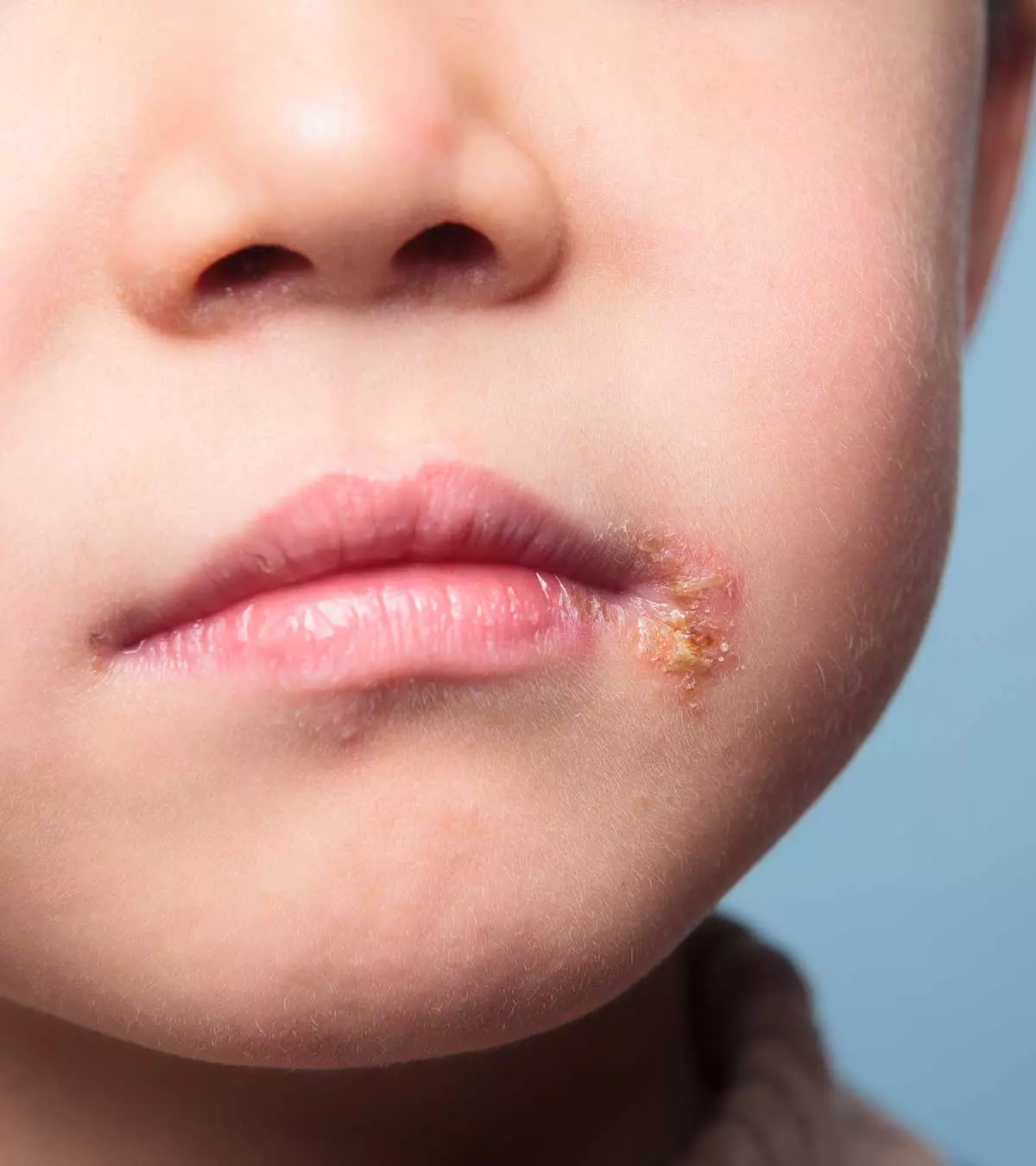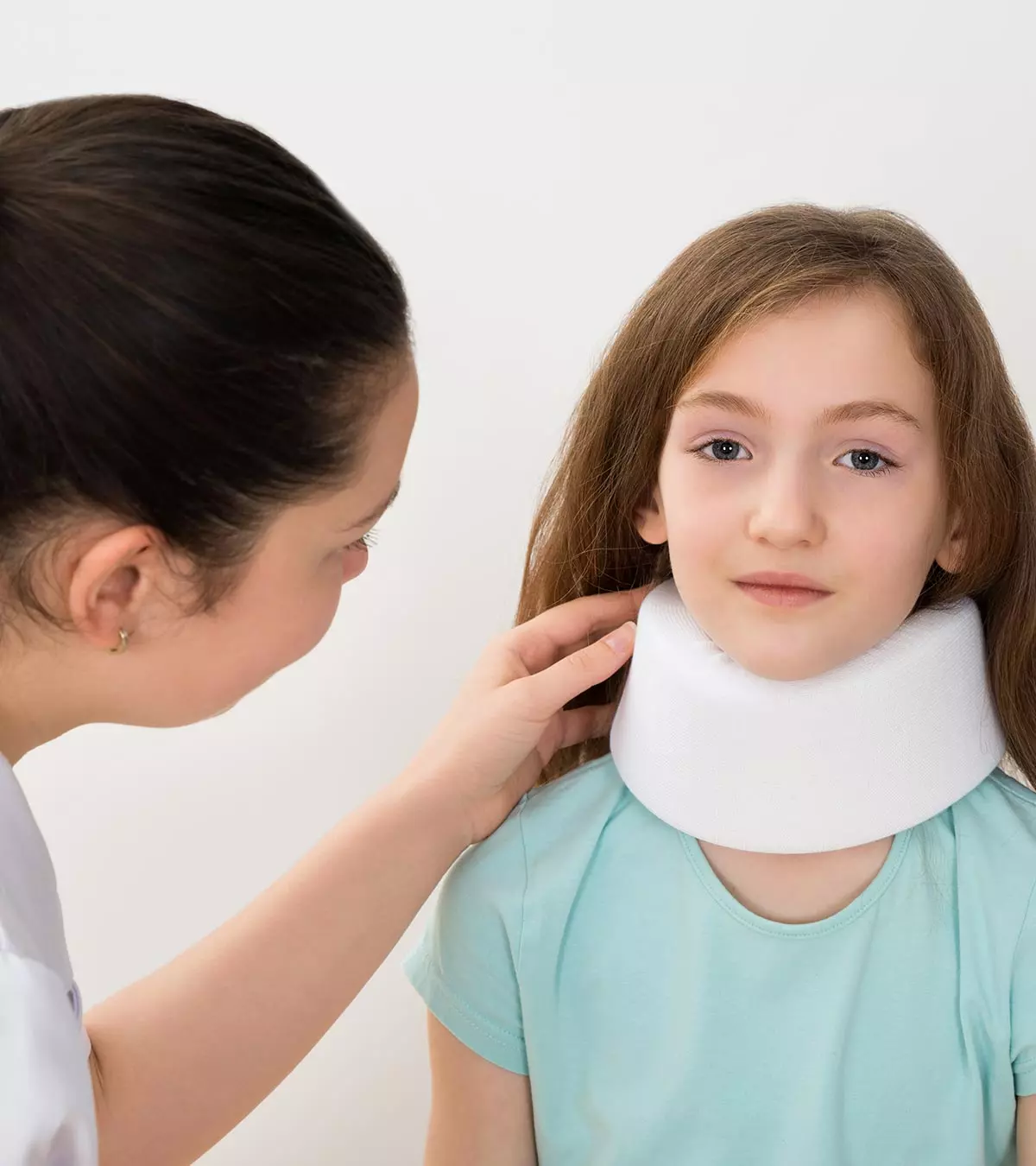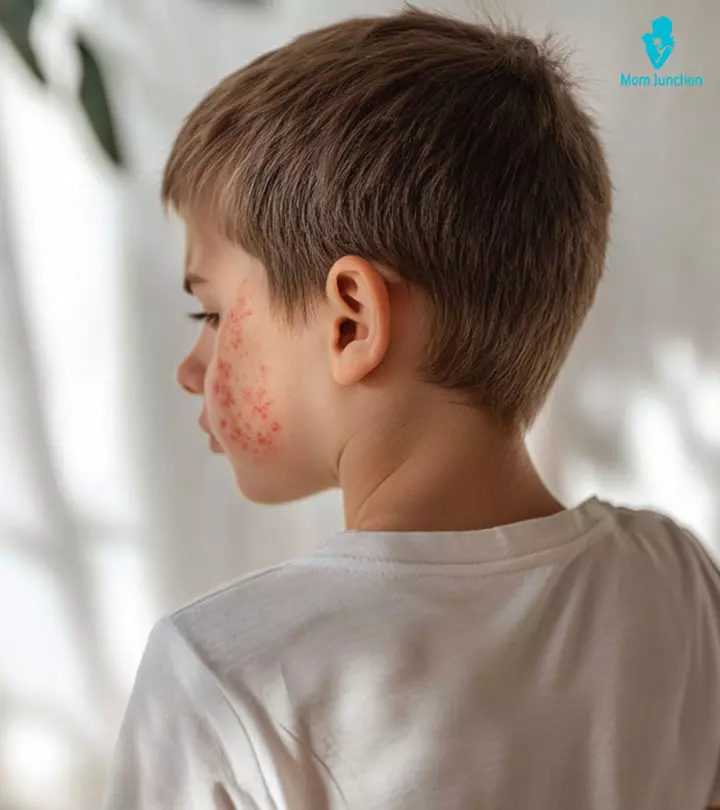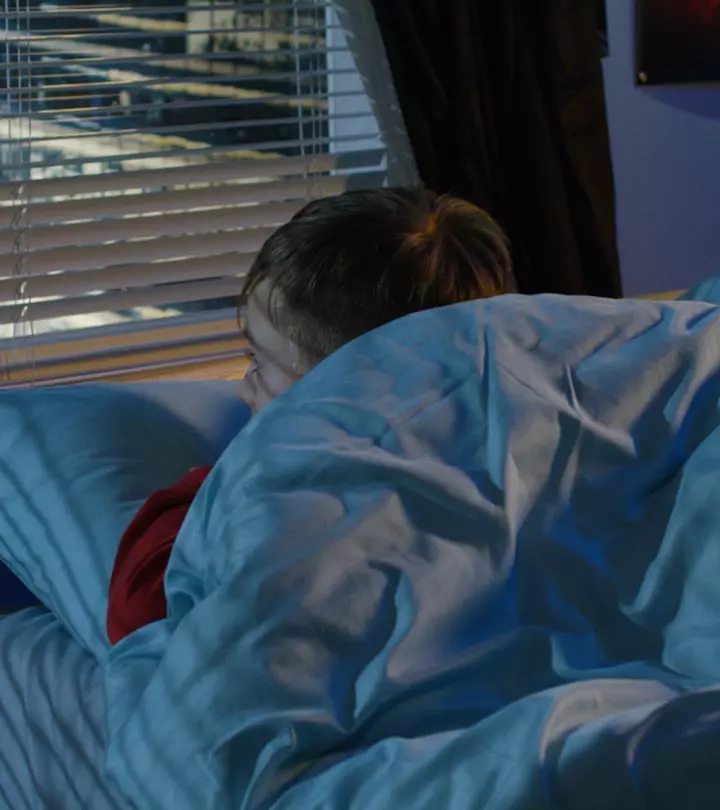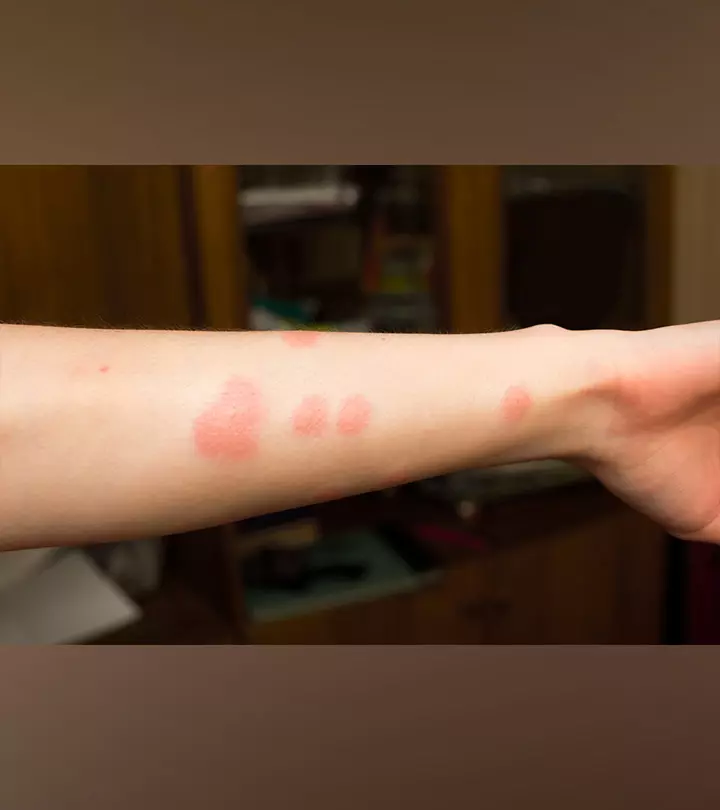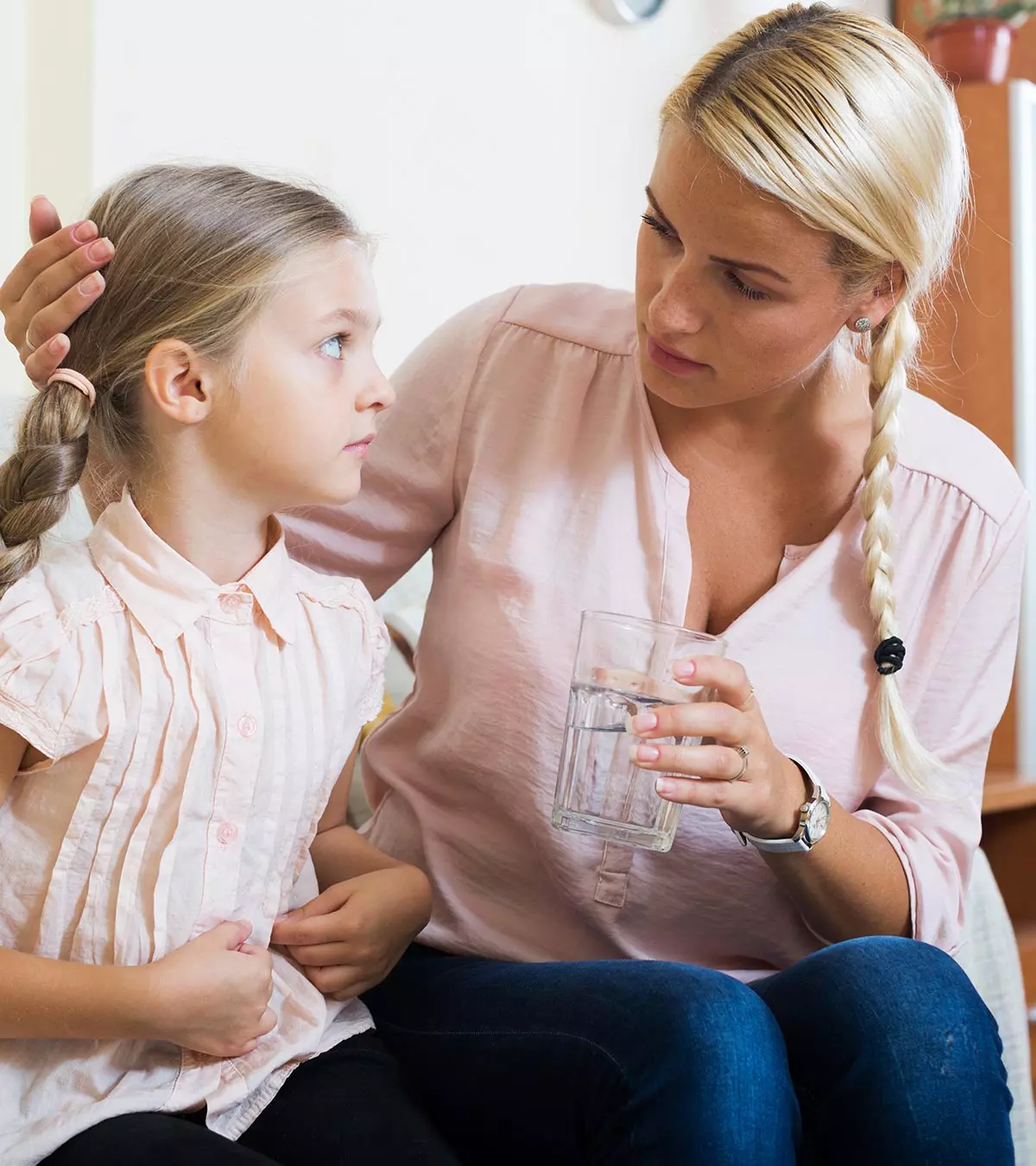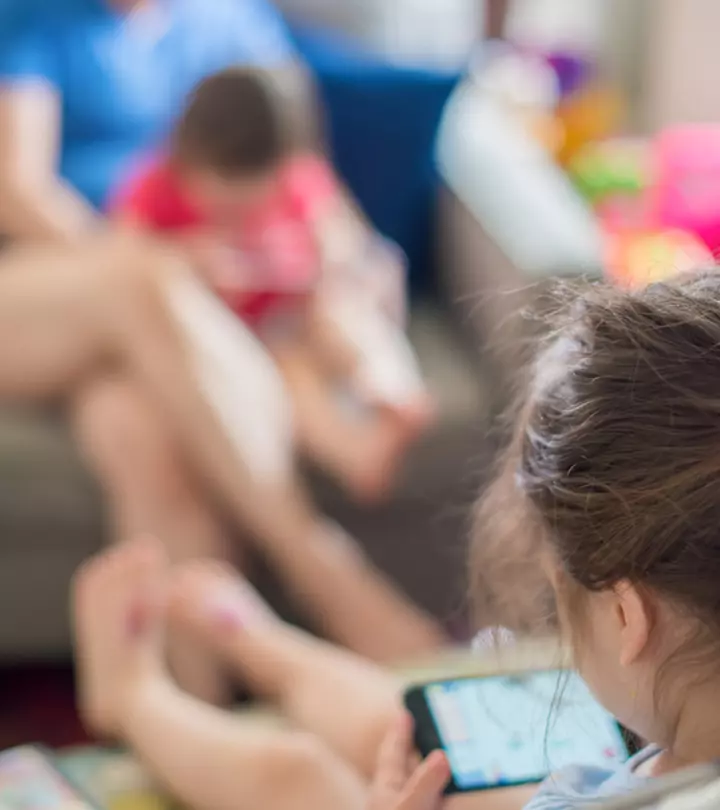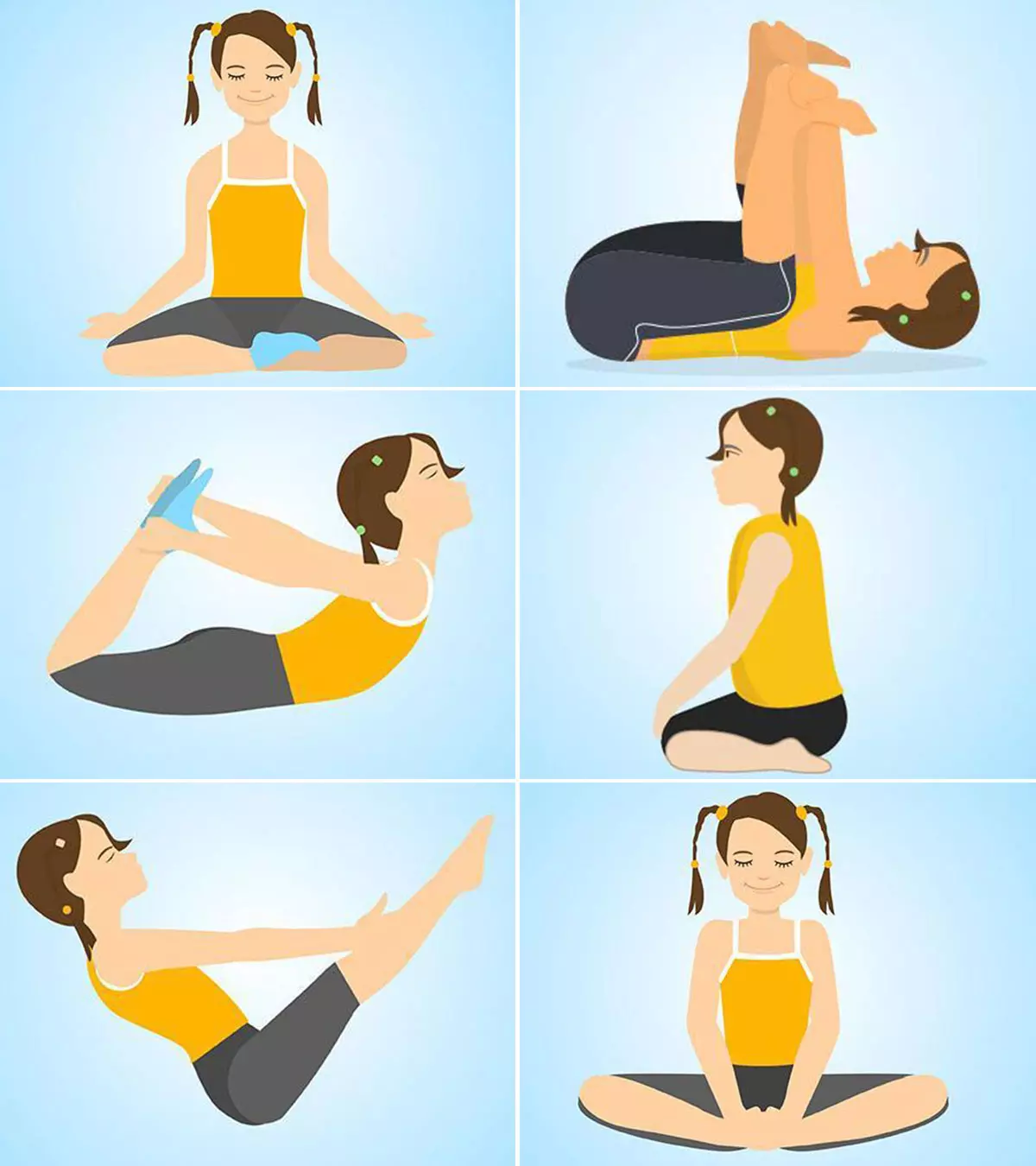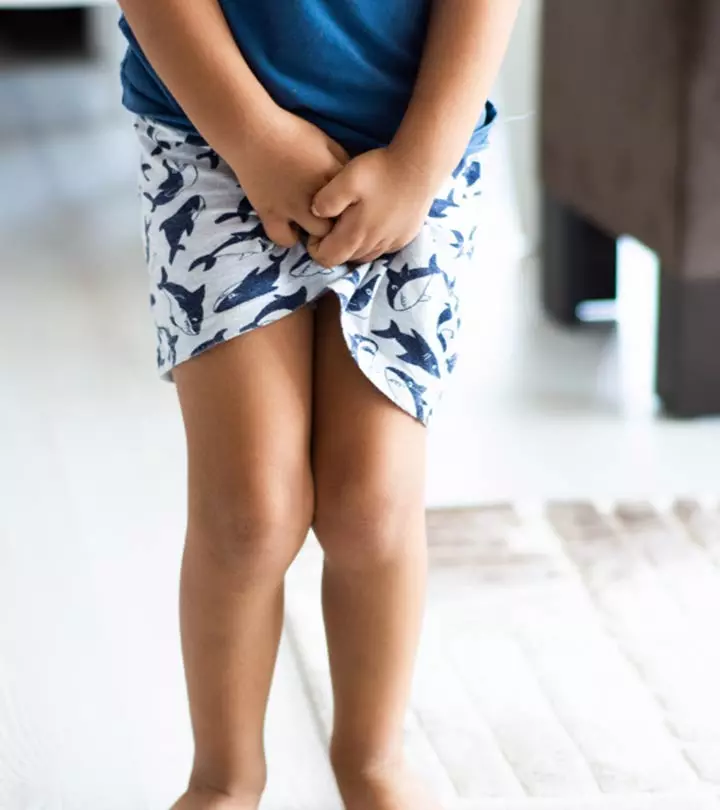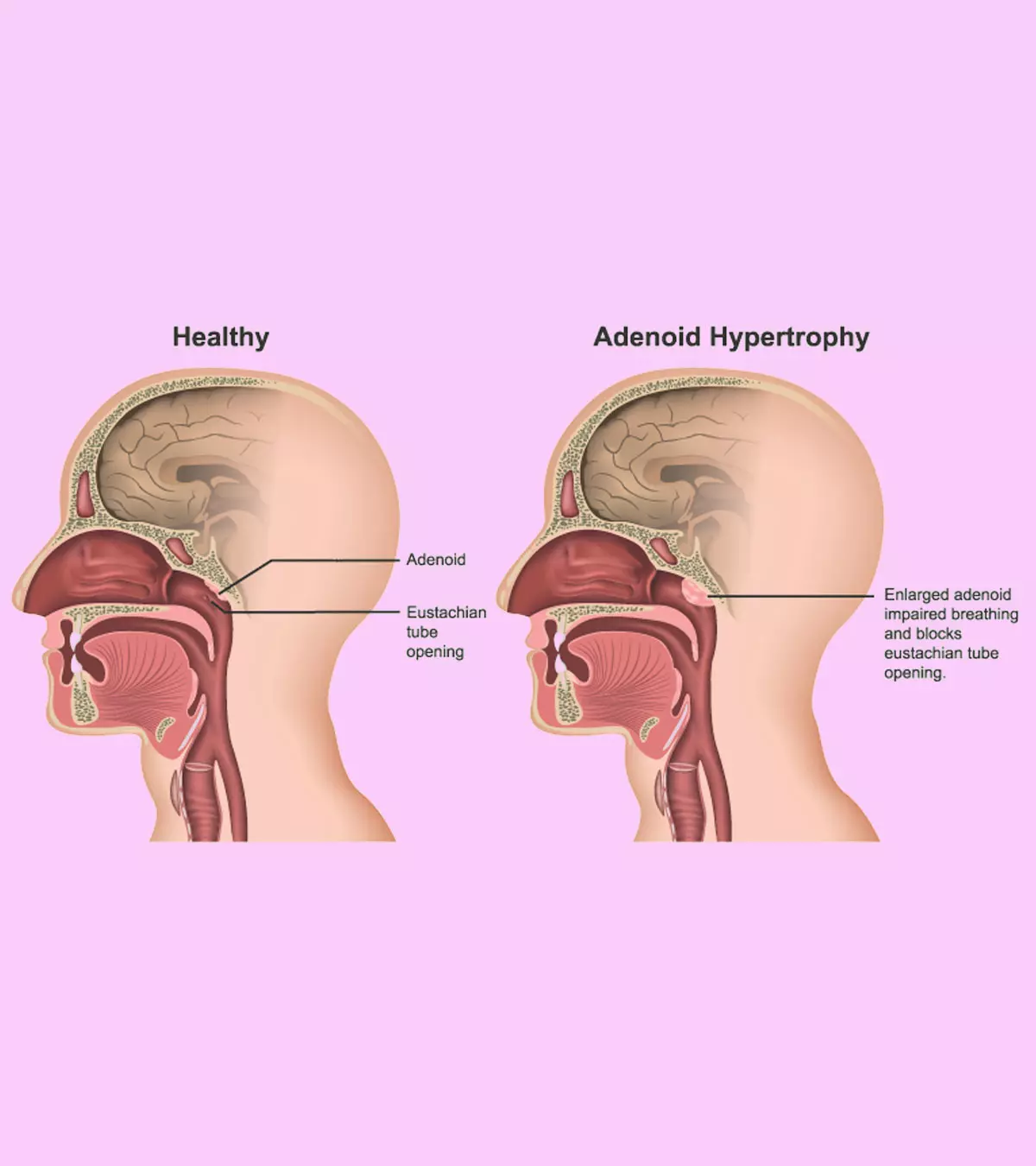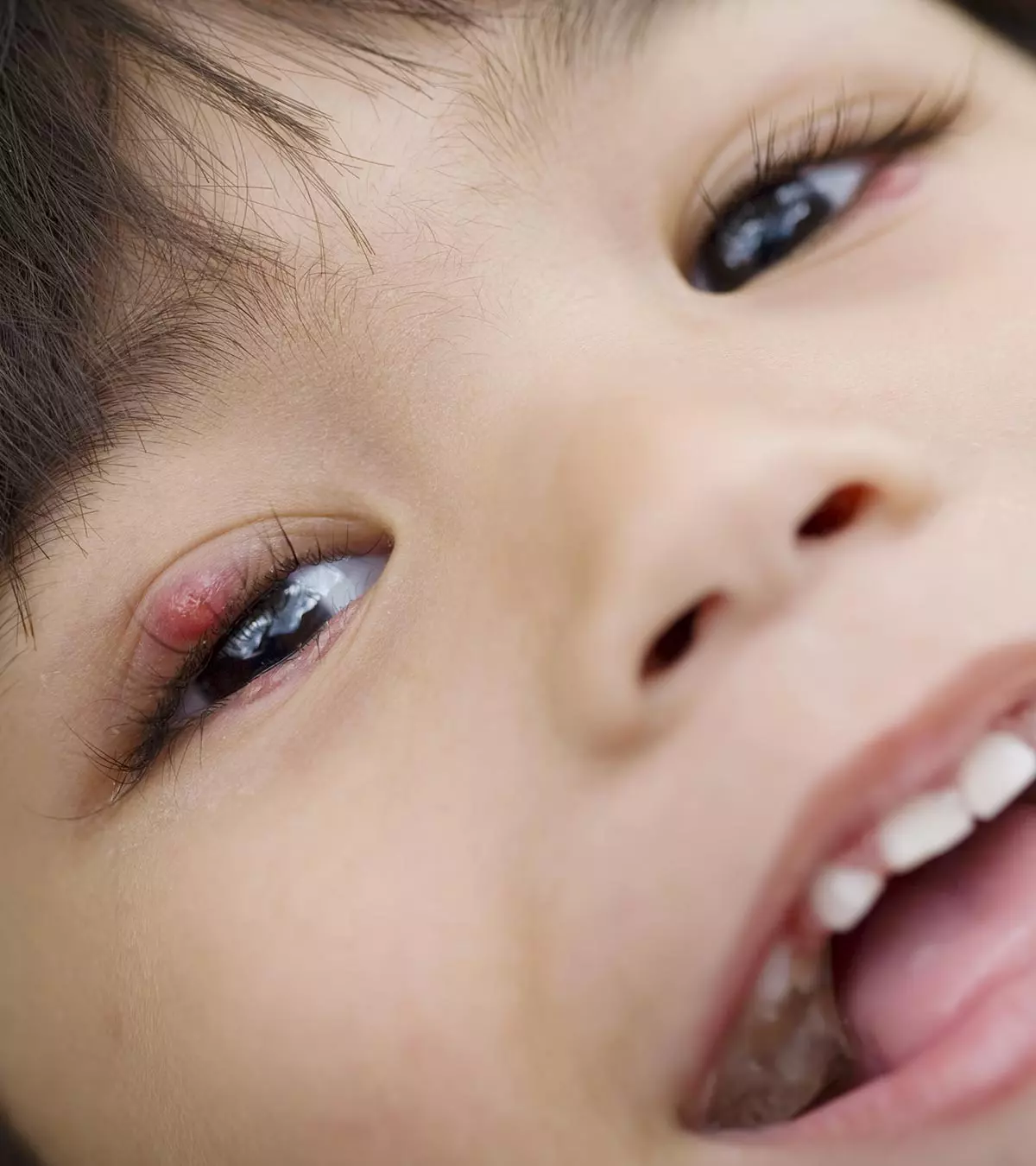
Styes are a common eye infection usually seen at the eyelash base and resemble a pimple. Also known as a hordeolum, they may grow inside or outside the eyelid. Stye in children are not contagious and usually fade away on their own, or you can follow some home care tips to treat them. However, medical intervention is rarely needed. So, read this post to know more about the causes, symptoms, necessary measures, and home remedies of stye infection in children. We have also discussed ways to prevent styes.
Key Pointers
- A stye is a bacterial eye infection that appears as a pus-filled growth on the base of the eyelid.
- It is caused by Staphylococcus bacteria that infect glands on the inside or outside of the eyelid.
- Symptoms include sensitivity to light, pain or tenderness, a bump on the eyelid, and watering of the eye.
- Rubbing, squeezing, or scratching the stye can worsen the condition.
- To manage a stye in children and teens, hot compresses, antibiotic ointments, eyelid cleaning, hygiene maintenance, wearing sunglasses, avoiding makeup, and using home remedies can be helpful.
What Can Cause Stye In Children?
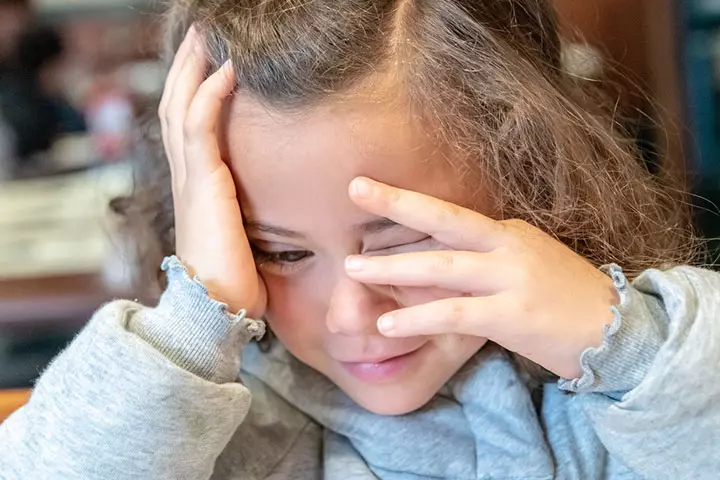
Your child could get a stye due to a bacterial infection. Staphylococcal bacteria usually cause this infection; these bacteria are harmlessly found on the skin but would cause infection only near the areas where the skin is damaged.
According to the National Institutes of Health, Staphylococcus aureus accounts for 90% to 95% of hordeolum or stye cases, making it the primary cause. Following closely, Staphylococcus epidermidis is identified as the second most prevalent cause of this acute bacterial infection affecting the eyelid margin.
Rubbing the eye after touching the mucus from the nose is one possible way for the bacteria to enter the eye (1). Other factors that might be responsible include poor hygiene practices, allergies, or underlying skin conditions such as rosacea or seborrheic dermatitis, which can increase the risk of bacterial infections.
 Quick fact
Quick factWhat Does A Stye Look Like?
A stye is a reddish bump that resembles a pimple on the eyelid. It is at the junction of the eyelash with the eyelid. That bump would be filled with pus and look inflamed. The pus gets collected within the stye, which appears as a yellowish spot on the center of the bump.
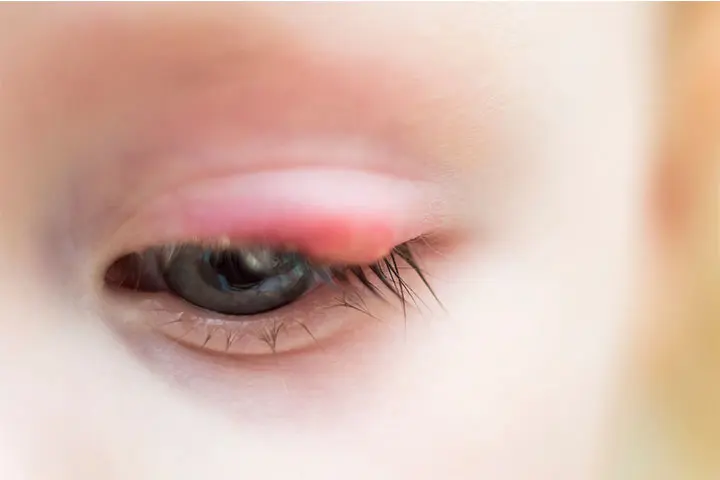
Types Of styes
Styes are of two types, internal and external (2)
1. Internal styes
These styes occur inside the eye, near the eyelid margin, because of clogged tarsal glands (which are present along the rims of the eyelids), that develop due to the bacterial infection. These are more painful and tend to last longer.
2. External styes
When the bacteria infect the glands present near the eyelashes (Meibomian gland and glands of Zeis or Moll), external styes occur.
What Are The Early Symptoms Of Styes?

Some of the first signs of stye that cause constant eye discomfort and eye irritation include (3) :
- Eye swelling or bump on the eyelid
- Eye pain and redness around the bump
- The swollen eyelids in children would be tender to touch
- Eye discharge
- Sensitivity to light
- Foreign body sensation inside the eye
As the infection progresses, pus starts to accumulate, and the bump would appear yellow and red, filled with pus (1). As styes are not contagious, you could consider sending your child to school as long as they are not experiencing severe symptoms. However, the child should refrain from continuously rubbing the eye.
Stye may sometimes be confused with conjunctivitis, but if the above symptoms are not accompanied by a lump then it may more likely be the latter.
How To Take Care Of Stye At Home?
These home care tips do not treat bacterial infections but might reduce the healing time and aid in relieving the symptoms.
- Apply warm or hot compress on the bump for 15 minutes, three to four times a day. This will help in softening the bump and draining of the pus from the stye.
- Clean the eyelids by scrubbing them with lid scrubs or baby shampoo. This will promote eye hygiene and prevent the spread of bacterial infection.
- Instruct the child not to rub or squeeze the stye. Rubbing the eye should be completely discouraged.
- Ask your child to wash their face and eyes thoroughly.
- Teenagers should be instructed not to wear eye makeup until the eye is healed completely.
- If the stye does not subside with these home care tips, then your doctor might prescribe an antibiotic ointment, which may not treat the infection, but prevent it from spreading(2).
Wendy Hill, a mom of three children, shares her experience on her blog when her son Sean caught a stye when they were out for a trip and how they treated it. She says, “Tuesday morning, Sean woke up with a swollen eye, the size of a golf ball. At first, we took him to the camp nurse, he said it looked like a stye and suggested warm compresses. We headed back to the room after breakfast and applied a warm compress. When he returned from class for lunch at noon, the eyes looked worse. I decided to take him to Urgent Care.
“The doctor there diagnosed it as a bacterial infection and said ‘We don’t mess around when it comes to the eye.’ They gave us prescriptions for an antibiotic and an antihistamine and sent us to see an ophthalmologist (ⅰ).’’
What Are Some Home Remedies For Stye In Children?
Along with the home care measures, you can also consider using a few home remedies to speed up the recovery process. Considering that there isn’t sufficient scientific evidence to back these remedies, there is no guarantee that these remedies might provide relief from the stye.
1. Turmeric
This spice is known for its antimicrobial properties, and could help in preventing the spread of infection (4).
How to: For external styes, mix a little water in turmeric powder to make a paste and apply that on the stye. Leave it for 15 minutes and rinse it. Repeat this until the bump starts to fade away.
Alternatively, you can also dip a washcloth in warm turmeric water and apply it on the eye.
2. Teabags
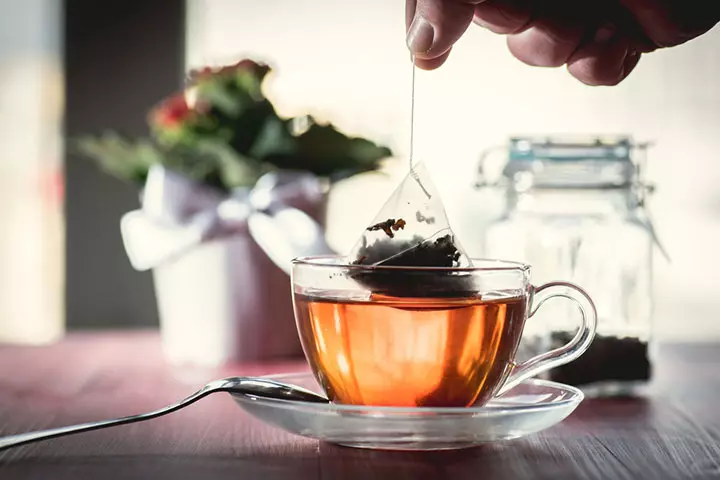
Anecdotal evidence suggests that placing tea bags in the stye can relieve pain and swelling.
How to: Boil the tea bags and let them cool. Place the cooled tea bags on your child’s eyes and hold them in position for ten minutes. Repeat this five times a day.
3. Coconut oil
This is said to have antimicrobial properties and might help in preventing the spread of the bacteria (4).
How to: For external styes, take a few drops of coconut oil and apply it on the stye, be careful not to use in excess as it might get into the eye and cause irritation.
How Is Stye Diagnosed?
Styes usually drain out and fade away in a few days. If they do not or if you see additional symptoms, such as fever or loss of appetite, then you need to take your child to the doctor.
Your child’s doctor would conduct a physical examination of the eye and enquire about your child’s medical history before suggesting a course of treatment.
How To Treat Styes In Children?
Mostly, a stye gets resolved in a week. So, before going for medical treatment, you could try a few home care tips to reduce the infection and relieve the symptoms.
If the stye does not subside with home care, then your Ophthalmologist might prescribe eye drops or topical antibiotics. Ophthalmic antibiotic ointments are necessary in most cases. Systemic antibiotics, surgical, and drainage may be prescribed in case of severe and persistent cases(2).
Who Are At A Higher Risk Of Developing Styes?
Anyone can develop styes, although children with the following conditions could be at a higher risk of developing them.
- Severe cases of seborrheic dermatitis (a condition that causes scaly patches on the scalp)
- Diabetes
- Compromised immunity system
- High serum lipids (6)
These conditions might cause recurring styes in children. Also, poor hygiene habits can cause styes to recur.
 Be watchful
Be watchfulCan You Prevent Styes In Children?

Since stye is caused due to bacterial infection, you could take a few steps to minimize the risk of infection.
- Instruct the child not to rub the eyes too often as this might cause the bacteria to get into the eye.
- Encourage regular hand washing and the use of hand sanitizers, especially before touching the face and eyes, to minimize the risk of bacterial transmission.
- Let them wear sunglasses to protect the eye from dust.
- Personal hygiene for kids is extremely important. Teach your children good hygiene habits such as washing their face and hands after playing outside.
- If your teenager uses eye makeup, then make sure you store the makeup in a clean place and replace the products once every six months, as bacteria might get accumulated in them.
- Instruct your children not to share their eyeliners and mascaras with other children as this can cause bacterial transmission.
What Are The Risks And Complications Of Stye In Children?
- Styes are harmless eye infections and tend to fade on their own in a week or two. In rare cases, untreated styes could turn into chalazion, which is a chronic condition that could press the eye and reduce the opening of the eyelids. This is not as painful as a stye but might take more time to fade away or may require antibiotics(2).
- If the bacterial infection spreads to the tissue around the eye, it can result in periorbital cellulitis; this condition causes swelling and redness around the eyes. This could be treated with antibiotics (7).
Frequently Asked Questions
1. Are styes contagious?
Styes are generally not contagious. However, some bacteria can be spread from the stye to another person. So, you should wash your hands after touching stye and wash pillowcases to prevent the spread (7).
2. Should I take my child to the doctor for a stye?
You may take your child to the doctor if the stye doesn’t go away within a few days of home care measures or OTC management. Fever, headache, fatigue, or any other symptoms with stye indicate seeking medical care (8).
3. How long does a stye usually last?
Stye usually goes away within a week or two. Although it can be painful until it resolves, it is rarely a symptom of serious medical conditions (9)
4. Does a stye get bigger before it goes away?
In some children, a stye can become swollen and larger after a few days. This means the stye is pus-filled and often requires drainage of pus. Most styes disappear after draining the pus or the fluid inside (10).
5. What dosage of amoxicillin should I give my child for a stye?
Amoxicillin is a penicillin antibiotic used to treat bacterial infections. The daily dosage required for a child with bacterial infections (such as a stye) is 20mg to 40mg per kilogram of body weight, split into three times (dosed every eight hours) in the day. However, it is essential to note that pediatric amoxicillin (liquid) comes in dosage strengths of 125mg/5mL, 250mg/5mL, 200mg/5mL, and 400mg/5mL. With each value, the substance per milliliter of the liquid is higher; therefore, it is recommended to consult a doctor. In addition, verifying that the child has no allergies to penicillin before administering amoxicillin is vital (11).
Teaching children about the importance of good hygiene habits and restraining them from rubbing their eyes affected by the stye are common preventative measures to aid in the healing process. Although stye in children is a common occurrence, they can be treated easily with the help of certain home remedies, such as using turmeric or coconut oil. However, it is advised to consult your doctor about the safety and effectiveness of such remedies before following them. Also, ensure that the infection does not spread to the surrounding tissues of the eye as it might increase the risk of periorbital cellulitis.
Infographic: Home Remedies For Stye In Children
Although styes are generally not alarming, they can cause pain and discomfort due to the watery and swollen eyes. So if your child is experiencing a similar infection, relieve them of the discomfort by adopting effective home remedies. Scroll through this infographic below and find out which one works the best. Illustration: Momjunction Design Team
Illustration: Preventive Tips For Stye In Children And Home Remedies

Image: Dall·E/MomJunction Design Team
Personal Experience: Source
MomJunction articles include first-hand experiences to provide you with better insights through real-life narratives. Here are the sources of personal accounts referenced in this article.
ⅰ. Another great CBLI experience with a little drama;https://ofbooksandboys.blogspot.com/2013/08/another-great-cbli-experience-with.html
References
- Jannathulferdioz, Brundha; Awareness of Stye; International Journal of Pharmaceutical Sciences Review and Research
https://globalresearchonline.net/journalcontents/v40-1/08.pdf - Kristina Lindsley, Jason J Nichols, and Kay Dickersin; Interventions for acute internal hordeolum; NCBI
https://www.ncbi.nlm.nih.gov/pmc/articles/PMC3424070/ - What are styes and chalazia; American Academy of Ophthalmology
https://www.aao.org/eye-health/diseases/what-are-chalazia-styes - Abbas Abel Anzaku; Antimicrobial Activity of Coconut Oil and its Derivative (Lauric Acid) on Some Selected Clinical Isolates; Research Gate
https://www.researchgate.net/publication/254247501_Chemical_Composition_of_Turmeric_Oil_Curcuma_longa_L_cv_Roma_and_its_Antimicrobial_Activity_against_Eye_Infecting_Pathogens - Davis Willmann; Bhupendra C. Patel; Scott W. Melanson; Stye; NCBI
https://www.ncbi.nlm.nih.gov/books/NBK459349/ - Crystal Bae; Daniele Bourget; Periorbital Cellulitis; NCBI
https://www.ncbi.nlm.nih.gov/books/NBK470408/ - Stye; Cleveland Clinic
https://my.clevelandclinic.org/health/diseases/17658-stye#:~:text=Can%20a%20stye%20spread%3F,prevent%20the%20bacteria%20from%20spreading - Stye; RaisingChildren.
https://raisingchildren.net.au/guides/a-z-health-reference/stye#:~:text=about%20a%20stye%3F-,Take%20your%20child%20to%20the%20GP%20if%20the%20stye%20doesn,child%20is%20feeling%20generally%20unwell - Stye; National Health Service
https://www.nhs.uk/conditions/stye/ - Stye; Healthdirect
https://www.healthdirect.gov.au/stye
https://www.healthdirect.gov.au/stye - Amoxicillin (oral route); Mayo clinic
https://www.mayoclinic.org/drugs-supplements/amoxicillin-oral-route/proper-use/drg-20075356?p=1
Community Experiences
Join the conversation and become a part of our nurturing community! Share your stories, experiences, and insights to connect with fellow parents.
Read full bio of Dr. Mubina Agboatwalla
Read full bio of Dr. Ritika Shah
Read full bio of Swati Patwal
Read full bio of Ghazia Shah








